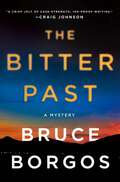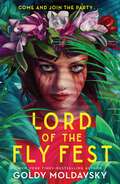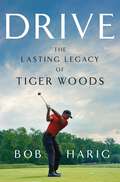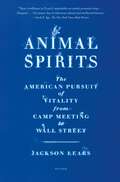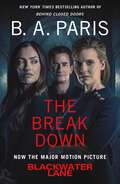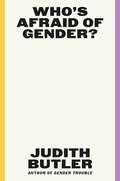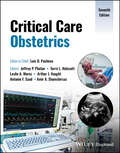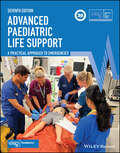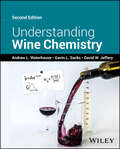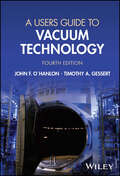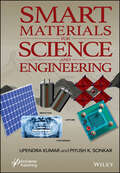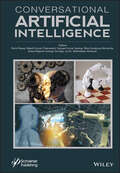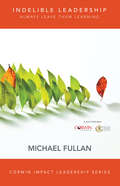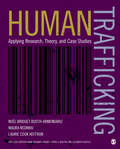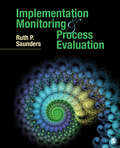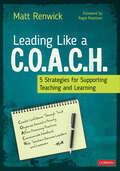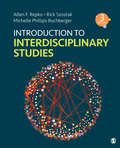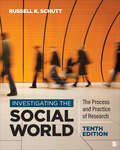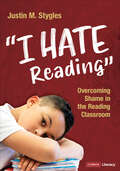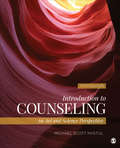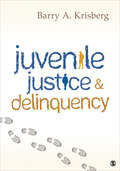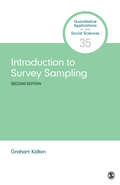- Table View
- List View
The Bitter Past: A Mystery (Porter Beck #1)
by Bruce BorgosIn the tradition of Craig Johnson and C. J. Box, Bruce Borgos's The Bitter Past begins a compelling series set in the high desert of Nevada featuring Sheriff Porter Beck…Porter Beck is the sheriff in the high desert of Nevada, north of Las Vegas. Born and raised there, he left to join the Army, where he worked in Intelligence, deep in the shadows in far off places. Now he's back home, doing the same lawman's job his father once did, before his father started to develop dementia. All is relatively quiet in this corner of the world, until an old, retired FBI agent is found killed. He was brutally tortured before he was killed and clues at the scene point to a mystery dating back to the early days of the nuclear age. If that wasn't strange enough, a current FBI agent shows up to help Beck's investigation.In a case that unfolds in the past (the 1950s) and the present, it seems that a Russian spy infiltrated the nuclear testing site and now someone is looking for that long-ago, all-but forgotten person, who holds the key to what happened then and to the deadly goings on now.
The Sullivanians: Sex, Psychotherapy, and the Wild Life of an American Commune
by Alexander StilleFINALIST FOR THE 2024 GOTHAM BOOK PRIZEThe devolution of the Sullivan Institute, from psychoanalytic organization to insular, radical cult.In the middle of the Ozzie and Harriet 1950s, the birth control pill was introduced and a maverick psychoanalytic institute, the Sullivan Institute for Research in Psychoanalysis, opened its doors in New York City. Its founders, Saul Newton and Jane Pearce, wanted to start a revolution, one grounded in ideals of creative expression, sexual liberation, and freedom from the expectations of society, and the revolution, they felt, needed to begin at home. Dismantling the nuclear family—and monogamous marriage—would free people from the repressive forces of their parents. In its first two decades, the movement attracted many brilliant, creative people as patients: the painter Jackson Pollock and a swarm of other abstract expressionist artists, the famed art critic Clement Greenberg, the singer Judy Collins, and the dancer Lucinda Childs. In the 1960s, the group evolved into an urban commune of three or four hundred people, with patients living with other patients, leading creative, polyamorous lives.But by the mid-1970s, under the leadership of Saul Newton, the Institute had devolved from a radical communal experiment into an insular cult, with therapists controlling virtually every aspect of their patients’ lives, from where they lived and the work they did to how often they saw their sexual partners and their children. Although the group was highly secretive during its lifetime and even after its dissolution in 1991, the noted journalist Alexander Stille has succeeded in reconstructing the inner life of a parallel world hidden in plain sight in the middle of Manhattan. Through countless interviews and personal papers, The Sullivanians reveals the nearly unbelievable story of a fallen utopia.
Lord of the Fly Fest
by Goldy MoldavskyInfluencers trapped on a deserted island with a murder suspect in their midst—what could possibly go wrong? Fans of White Lotus will love Lord of the Fly Fest, a hilarious and gripping take on Lord of the Flies from New York Times bestselling author Goldy Moldavsky. Rafi Francisco needs a splashy case to put her true-crime podcast on the map. Her plan? A murder investigation, of course. She’s heading to Fly Fest, an exclusive music festival on a Caribbean island, to interview River Stone, the pop star who rocketed to fame after his girlfriend’s mysterious disappearance. And her interview is going to expose him as the killer she’s sure he is.But when Rafi—and hordes of influencers—arrive at Fly Fest, the dreamy Caribbean getaway they were promised turns out to be a nightmare. Soon, Rafi is fighting for her life against power-hungry beauty gurus and spotty WiFi. And as the festival from hell continues with no end in sight, and Rafi finds herself growing closer to River, she begins to discover that his secrets have much bigger consequences than she ever imagined.
Drive: The Lasting Legacy of Tiger Woods
by Bob HarigBob Harig's latest deep-dive into Tiger Woods' thrilling career, as seen through his iconic 2019 Masters comeback and win. In April of 1997, the world of golf was forever changed. At the age of 21, a young Tiger Woods won the most prestigious golf tournament in the world, the Masters, by a record of 12 strokes. Woods became the youngest golfer ever to win the Masters and the first African or Asian-American player to win a major. History had been made - and would continue to be made over the next 15 years.Woods transformed the game, turning golf geeks into keen observers, casual golf fans into ardent followers and even indifferent sports fans into curiosity mavens. He will undoubtedly be known for the raw numbers: 82 PGA Tour titles, 15 major championships, and according to Forbes, a billionaire who amassed more than $110-million in official PGA Tour earnings. Woods has proven to be a complicated figure through his decades in the spotlight. Plagued by marital scandal, a DUI arrest, and severe back injuries that resulted in what even he believed would be a career-ending spinal fusion surgery in 2017, Woods’ career finally seemed to be coming to an end. That all changed through 2018 and into 2019 as Woods returned slowly from the surgery. In 2019, on the same course where he won for the first time in 1997, Tiger Woods made history once again, winning the Masters one final time. The 2019 Masters brought together all the qualities that ultimately make up someone who has been an enduring figure for 30 years.In this captivating and emotional portrait of one of the most famous figures in sports, Bob Harig brings readers the true story of the grit and perseverance of Tiger Woods in the final years of his career. Drive will show that Woods’ true legacy is one of resolve and redemption.
August Blue: A Novel
by Deborah LevyNamed a Best Book of the Year by TIME, Vulture, The Guardian, BBC, The Week, and Publisher's WeeklyA new novel from the Booker Prize finalist Deborah Levy, the celebrated author of The Man Who Saw Everything and The Cost of Living.At the height of her career, the piano virtuoso Elsa M. Anderson—former child prodigy, now in her thirties—walks off the stage in Vienna, midperformance.Now she is in Athens, watching an uncannily familiar woman purchase a pair of mechanical dancing horses at a flea market. Elsa wants the horses too, but there are no more for sale. She drifts to the ferry port, on the run from her talent and her history.So begins her journey across Europe, shadowed by the elusive woman who seems to be her double. A dazzling portrait of melancholy and metamorphosis, Deborah Levy’s August Blue uncovers the ways in which we attempt to revise our oldest stories and make ourselves anew.
Animal Spirits: The American Pursuit of Vitality from Camp Meeting to Wall Street
by Jackson Lears“[A] master class in American cultural and intellectual history.” —Sarah E. Igo, The New York Times Book Review“Jackson Lears is the preeminent cultural historian of the American empire. This book is another masterpiece in his magisterial corpus.” —Cornel WestOne of Wired's best books of 2023A master historian’s retrieval of the spiritual visions and vitalisms that animate American life and the possibilities they offer today.In Animal Spirits, the distinguished historian Jackson Lears explores an alternative American cultural history by tracking the thinkers who championed the individual’s spontaneous energies and the idea of a living universe against the strictures of conventional religion, business, and politics. From Puritan times to today, Lears traces ideas and fads such as hypnosis and faith healing from the pulpit and stock exchange to the streets and the betting table. We meet the great prophets of American vitality, from Walt Whitman and William James to Andrew Jackson Davis (the “Poughkeepsie Seer”) and the “New Thought” pioneer Helen Wilmans, who spoke of the “god within—rendering us diseaseless incarnations of the great I Am."Well before John Maynard Keynes stressed the reliance of capitalism on investors’ “animal spirits,” these vernacular vitalists established an American religion of embodied mind that also suited the needs of the marketplace. In the twentieth century, the vitalist impulse would be enlisted in projects of violent and racially charged national regeneration by Theodore Roosevelt and his legatees, even as African American writers confronted the paradoxes of primitivism and the 1960s counterculture imagined new ways of inspiriting the universe. Today, scientists are rediscovering the best features of the vitalist tradition—permitting us to reclaim the role of chance and spontaneity in the conduct of our lives and our understanding of the cosmos.Includes 8 pages of black-and-white images
The Breakdown: A Novel
by B.A. ParisNow A Major Motion Picture Blackwater Lane starring Minka Kelly, Dermot Mulroney, and Maggie Grace.THE NEW CHILLING, PROPULSIVE NOVEL FROM THE AUTHOR OF THE INSTANT NEW YORK TIMES AND USA TODAY BESTSELLING BEHIND CLOSED DOORS.If you can’t trust yourself, who can you trust?Cass is having a hard time since the night she saw the car in the woods. It was on the winding rural road, in the middle of a downpour, and a woman was sitting inside—the woman who was killed. She’s been trying to put the crime out of her mind; what could she have done, really? It’s a dangerous road to be on in the middle of a storm, and she probably would have been hurt herself if she’d stopped. Not only that, her husband would be furious if he knew she’d broken her promise not to take that shortcut home.But since then, she’s been forgetting every little thing. Where she left the car; if she took her pills; even the alarm code.The only thing she can’t forget is that woman, the woman she might have saved, and the terrible nagging guilt.And the silent calls she’s receiving, or the feeling that someone’s watching her…
Who's Afraid of Gender?
by Judith ButlerNational Bestseller. Named a Best Book of 2024 (so far) by NPR, Harper's Bazaar, W, and Esquire, and a Most Anticipated Book of 2024 by The New York Times, The Washington Post, Time, Los Angeles Times, ELLE, Cosmopolitan, Kirkus, Literary Hub, Autostraddle, The Millions, Electric Literature, and them. "A profoundly urgent intervention.” —Naomi Klein "A timely must-read for anyone actively invested in re-imagining collective futurity.” —Claudia RankineFrom a global icon, a bold, essential account of how a fear of gender is fueling reactionary politics around the world. Judith Butler, the groundbreaking thinker whose iconic book Gender Trouble redefined how we think about gender and sexuality, confronts the attacks on “gender” that have become central to right-wing movements today. Global networks have formed “anti-gender ideology movements” that are dedicated to circulating a fantasy that gender is a dangerous, perhaps diabolical, threat to families, local cultures, civilization—and even “man” himself. Inflamed by the rhetoric of public figures, this movement has sought to nullify reproductive justice, undermine protections against sexual and gender violence, and strip trans and queer people of their rights to pursue a life without fear of violence.The aim of Who’s Afraid of Gender? is not to offer a new theory of gender but to examine how “gender” has become a phantasm for emerging authoritarian regimes, fascist formations, and transexclusionary feminists. In their vital, courageous new book, Butler illuminates the concrete ways that this phantasm of “gender” collects and displaces anxieties and fears of destruction. Operating in tandem with deceptive accounts of “critical race theory” and xenophobic panics about migration, the anti-gender movement demonizes struggles for equality, fuels aggressive nationalism, and leaves millions of people vulnerable to subjugation.An essential intervention into one of the most fraught issues of our moment, Who’s Afraid of Gender? is a bold call to refuse the alliance with authoritarian movements and to make a broad coalition with all those whose struggle for equality is linked with fighting injustice. Imagining new possibilities for both freedom and solidarity, Butler offers us a hopeful work of social and political analysis that is both timely and timeless—a book whose verve and rigor only they could deliver.
Critical Care Obstetrics
by Luis D. PachecoCritical Care Obstetrics Improve medical outcomes for both mothers and children with this essential guide For the first time in decades, maternal mortality rates are climbing in the United States. Factors including lack of access to prenatal care, un- or underinsured populations, rising rates of cardiovascular disease, and more combine to make pregnancy and childbirth more dangerous prospects. In this environment, the study of critical care obstetrics has never been more essential. Critical Care Obstetrics, Seventh Edition a fully updated guide to the medical management of serious conditions in pregnancy and childbirth. Beginning with basic principles, it surveys the potential serious complications occurring in pregnancy and delivery and the techniques and procedures for maximizing patient outcomes for both pregnant people and fetuses. This clear, accessible text promises to continue the essential work of earlier editions. Readers of the seventh edition of Critical Care Obstetrics will also find: Detailed protocols for implementing life-saving treatments in emergencies New chapters on topics including ECMO, antibiotics, and pneumonia Authorship by internationally renowned experts in emergency obstetrics Critical Care Obstetrics is ideal for working clinical obstetricians and for trainees in obstetrics and gynecology.
Advanced Paediatric Life Support: A Practical Approach to Emergencies (Advanced Life Support Group)
by Stephanie SmithADVANCED PAEDIATRIC LIFE SUPPORT A PRACTICAL APPROACH TO EMERGENCIES The gold standard for treating paediatric emergencies Advanced Paediatric Life Support: A Practical Approach to Emergencies is the internationally renowned manual on emergency paediatric care. Written to support the course run by the Advanced Life Support Group, the book uses their structured approach: a tried and tested practical method of treating children during the crucial first few hours of a life-threatening illness or injury. Advanced Paediatric Life Support is used by doctors, nurses and allied health professionals dealing with emergencies in children. Its clear layout and straightforward style make it a highly practical tool both for training and in the event of an emergency. In the seventh edition you will find descriptions of both common and uncommon paediatric emergencies which you may encounter in clinical practice, their causes, and how to best treat them during the first hours after presentation. This book offers a thoroughly evidence-based approach to its subject, which includes: The latest International Liaison Committee on Resuscitation (ILCOR) 2021 guidelines A thorough introduction to the structured approach to paediatric emergencies, including important non-technical skills and communication Comprehensive explorations of the seriously ill child, including airway and breathing, circulation, decreased consciousness, seizures and exposure Practical discussions of the seriously injured child, including examinations of chest, abdominal, brain and spinal injuries Evidence-based life support treatment and the practical application of the Advanced Paediatric Life Support structured management Perfect for emergency care physicians, nurses and other allied health professionals, Advanced Paediatric Life Support: A Practical Approach to Emergencies will also benefit paediatric clinicians, doctors-in-training and anyone else with an interest in the team management and treatment of paediatric emergencies.
Understanding Wine Chemistry (Sci (society Of Chemical Industry) Ser.)
by David W. Jeffery Andrew L. Waterhouse Gavin L. SacksUnderstanding Wine Chemistry Understand the reactions behind the world’s most alluring beverages The immense variety of wines on the market is the product of multiple chemical processes – whether acting on components arising in the vineyard, during fermentation, or throughout storage. Winemaking decisions alter the chemistry of finished wines, affecting the flavor, color, stability, and other aspects of the final product. Knowledge of these chemical and biochemical processes is integral to the art and science of winemaking. Understanding Wine Chemistry has served as the definitive introduction to the chemical components of wine, their properties, and their reaction mechanisms. It equips the knowledgeable reader to interpret and predict the outcomes of physicochemical reactions involved with winemaking processes. Now updated to reflect recent research findings, most notably in relation to wine redox chemistry, along with new Special Topics chapters on emerging areas, it continues to set the standard in the subject. Readers of the second edition of Understanding Wine Chemistry will also find: Case studies throughout showing chemistry at work in creating different wine styles and avoiding common adverse chemical and sensory outcomes Detailed treatment of novel subjects like non-alcoholic wines, non-glass alternatives to wine packaging, synthetic wines, and more An authorial team with decades of combined experience in wine chemistry research and education Understanding Wine Chemistry is ideal for college and university students, winemakers at any stage in their practice, professionals in related fields such as suppliers or sommeliers, and chemists with an interest in wine.
A Users Guide to Vacuum Technology
by John F. O'Hanlon Timothy A. GessertA USERS GUIDE TO VACUUM TECHNOLOGY Choose and understand the vacuum technology that fits your project’s needs with this indispensable guide Vacuum technology is used to provide process environments for other kinds of engineering technology, making it an unsung cornerstone of hundreds of projects incorporating analysis, research and development, manufacturing, and more. Since it is very often a secondary technology, users primarily interested in processes incorporating it will frequently only encounter vacuum technology when purchasing or troubleshooting. There is an urgent need for a guide to vacuum technology made with these users in mind. For decades, A User’s Guide to Vacuum Technology has met this need, with a user-focused introduction to vacuum technology as it is incorporated into semiconductor, optics, solar sell, and other engineering processes. With an emphasis on otherwise neglected subjects and on accessibility to the secondary user of vacuum technology, it balances treatment of older systems that are still in use with a survey of the latest cutting-edge technologies. The result promises to continue as the essential guide to vacuum systems. Readers of the fourth edition of A User’s Guide to Vacuum Technology will also find: Expanded treatment of gauges, pumps, materials, systems, and best??operating practices Detailed discussion of cutting-edge topics like ultraclean vacuum and contamination control An authorial team with decades of combined research and engineering experience A User’s Guide to Vacuum Technology is essential for those entering emerging STEM programs, engineering professionals and graduate students working with a huge range of engineering technologies.
Smart Materials for Science and Engineering
by Upendra Kumar Piyush Kumar SonkarSMART MATERIALS FOR SCIENCE AND ENGINEERING Smart materials, also known as advanced or creative materials, are described as advanced materials that react intuitively to environmental changes or as materials that can return to their original shape in response to certain stimuli. Smart materials are classified as either active or passive based on their characteristics. There are two types of active materials. The first kind cannot change its characteristics when subjected to outside stimuli, for example photochromatic spectacles that only alter their color when exposed to sunlight. The other, which includes piezoelectric materials, can change one sort of energy (thermal, electrical, chemical, mechanical, or optical) into another. When subjected to external pressure, it can generate an electric charge. As an example, optical fibers can transmit electromagnetic waves. In contrast, passive smart materials can transmit a specific sort of energy. They have some amazing qualities that set them apart from other materials, such as transiency, meaning they can react to different kinds of external stimuli immediately, self-actuation or the capacity to change their appearance and shape, selectivity where the response is divided and expected, directness when the response is limited to the activating event, shape-changing where the material can change its shape to external stimuli, their ability to determine their own health, also known as self-diagnosis, and their ability to self-heal. The ability to synthesize novel materials has substantially progressed thanks to science and technology over the past 20 years. They fall mostly into the following four categories: polymers, ceramics, metals, and smart materials. Among these, smart materials are gaining popularity since they have more uses than conventional materials. Smart materials are unusual substances that have the ability to alter their properties, such as those that can immediately change their phase when placed near a magnet or their shape simply by applying heat. Humanity will be significantly impacted by this new era of smart materials. For instance, some of them can adapt their properties to the environment, some have sensory capabilities, some can repair themselves automatically, and some can degrade themselves. These extraordinary properties of smart materials will have an effect on all facets of civilization. There are many different types of intelligent materials, including magnetorheological materials, electro-rheostat materials, shape memory alloys, piezoelectric materials, and more. This book describes many forms of smart materials and their possible uses in various fields. A literature survey discusses the different types of smart materials, such as based ceramics, polymers, and organic compounds and their needs, advantages, disadvantages, and applications will be comprehensively discussed. A discussion of well-established smart materials including piezoelectric, magnetostrictive, shape memory alloy, electro-rheological fluid, and magnetorheological fluid materials will be discussed with their present prospects.
Conversational Artificial Intelligence
by Romil Rawat Rajesh Kumar Chakrawarti Sanjaya Kumar Sarangi Piyush Vyas Mary Sowjanya Alamanda Kotagiri Srividya Krishnan Sakthidasan SankaranThis book reviews present state-of-the-art research related to the security of cloud computing including developments in conversational AI applications. It is particularly suited for those that bridge the academic world and industry, allowing readers to understand the security concerns in advanced security solutions for conversational AI in the cloud platform domain by reviewing present and evolving security solutions, their limitations, and future research directions. Conversational AI combines natural language processing (NLP) with traditional software like chatbots, voice assistants, or an interactive voice recognition system to help customers through either a spoken or typed interface. Conversational chatbots that respond to questions promptly and accurately to help customers are a fascinating development since they make the customer service industry somewhat self-sufficient. A well-automated chatbot can decimate staffing needs, but creating one is a time-consuming process. Voice recognition technologies are becoming more critical as AI assistants like Alexa become more popular. Chatbots in the corporate world have advanced technical connections with clients thanks to improvements in artificial intelligence. However, these chatbots’ increased access to sensitive information has raised serious security concerns. Threats are one-time events such as malware and DDOS (Distributed Denial of Service) assaults. Targeted strikes on companies are familiar and frequently lock workers out. User privacy violations are becoming more common, emphasizing the dangers of employing chatbots. Vulnerabilities are systemic problems that enable thieves to break in. Vulnerabilities allow threats to enter the system, hence they are inextricably linked. Malicious chatbots are widely used to spam and advertise in chat rooms by imitating human behavior and discussions, or to trick individuals into disclosing personal information like bank account details.
Indelible Leadership: Always Leave Them Learning (Corwin Impact Leadership Series)
by Michael FullanMake a deep impact today that leaves a growing legacy for tomorrow. Learn to lead well and leave a lasting impact with this compact, richly innovative book from the Corwin Impact Leadership series. Discover six specific leadership attributes to stimulate deep learning— and deep leadership— that transforms schools for the future. Concrete examples and critical, yet implementable action steps help you: Commit to deep, meaningful work Master the content and process of change Co-learn and co-lead simultaneously Collaboratively develop individuals and groups Link your goals to the larger school system Produce new, capable leaders Uncover new ways of thinking and acting, for you and for those you lead, with this powerful leadership guide! Other books by Corwin: Quaglia: Principal Voice Zhao: Teaching for Greatness Glaze: Avis Glaze’s Impact Leadership "Few today have broader and deeper insights than Michael Fullan in helping to develop leadership amidst the cross currents of today’s school environments. Two of Fullan’s timely insights in Indelible Leadership—Students themselves are the hidden agents for deep change, and the real leadership capabilities needed today can be learned." Peter Senge MIT and Academy for Systemic Change "This book provides a wonderfully clear and concise guide for education leaders who want to make a real difference in the midst of challenging times. Fullan is a master!" Tony Wagner, Author The Global Achievement Gap and Creating Innovators
Human Trafficking: Applying Research, Theory, and Case Studies
by Noel B. Busch-Armendariz Laurie C. Heffron Maura B. NsonwuThis practical, interdisciplinary text draws from empirically grounded scholarship, survivor-centered practices, and an ecological perspective to help readers develop an understanding of the meaning and scope of human trafficking. Throughout the book, the authors address the specific vulnerabilities of human trafficking victims, their medical-psycho-social needs, and issues related to direct service delivery. They also address the identification of human trafficking crimes, traffickers, and the impact of this crime on the global economy. Using detailed case studies to illuminate real situations, the book covers national and international anti-trafficking policies, prevention and intervention strategies, promising practices to combat human trafficking, responses of law enforcement and service providers, organizational challenges, and the cost of trafficking to human wellbeing.
Implementation Monitoring and Process Evaluation
by Ruth P. SaundersThis practical guide helps readers understand and use the steps that program planners and evaluators take in implementing and monitoring a new program, policy, or practice in an organizational setting. The book covers the entire process, from planning, to carrying out the plan, and summarizing, reporting, and using the results. A wide range of real-world examples in the book are drawn from health, education, non-profit organizations, and public administration, and an extended case study, Your Turn boxes, and worksheet templates help readers apply concepts to their own projects. Ideal for practitioners, researchers, and students, this book can be used as a primary text for a process evaluation or an implementation monitoring course or as a supplemental text in a broader program evaluation course.
Leading Like a C.O.A.C.H.: 5 Strategies for Supporting Teaching and Learning
by Matt RenwickExpand your leadership capacity to help your school reach its potential All schools have the capacity for schoolwide instructional excellence. Schools with leaders who adopt a coaching stance as part of their practice are more likely to realize this success. Leaders achieve success with their teachers, their students, and their families, not alone. Leading like a C.O.A.C.H. reframes the approach to schoolwide change from a leader acting alone to a leader working with a community in which each member contributes their strengths and ideas to improving instruction. Renwick, a well-known blogger and writer on literacy and leadership, encourages school leaders to embody five practices: 1. Create confidence through trust; 2. Organize around a priority; 3. Affirm promising practices; 4. Communicate feedback; and 5. Help teachers become leaders and learners. Throughout this practical guide, readers will find Reflective questions Activities Indicators of success Examples of leaders coaching teachers to excellence Wisdom from the field This book provides new and veteran leaders with a practical approach and easily adoptable ideas for helping their schools realize their full potential.
Introduction to Interdisciplinary Studies
by Rick Szostak Michelle Phillips Buchberger Allen F. RepkoIntroduction to Interdisciplinary Studies provides a comprehensive introduction to interdisciplinary studies with an approach that is conceptual and practical. Completely updated to reflect advances in the literature on research, learning, and assessment, the book describes the role of both disciplines and interdisciplinarity within the academy, and how these have evolved. Authors Allen F. Repko, Rick Szostak, and Michelle Phillips Buchberger effectively show students how to think like interdisciplinarians in order to facilitate their working with topics, complex problems, or themes that span multiple disciplines. New to the Third Edition are guiding questions at the start of each chapter, a discussion of the public policy issue of "basic income" as an example at the end of each chapter, application of interdisciplinary techniques in daily life, enhanced discussion of ethical decision-making, and updated examples and references throughout. FREE SAGE edge online resources gives instructors and students the edge they need to succeed with an array of teaching and learning tools in one easy-to-navigate website.
Investigating the Social World: The Process and Practice of Research
by Russell K. SchuttThe Tenth Edition of the bestselling Investigating the Social World provides students with the critical skills necessary to evaluate research and to carry out their own research. Each chapter integrates instruction in the various core research methods with investigation of interesting aspects of the social world. The book has always sought to communicate the excitement of social research and the importance of carefully evaluating the methods we use in that research. This edition also includes updated coverage of each research method and features many new examples reflecting research on the key issues we have experienced since 2020: the COVID-19 pandemic, the rise of social justice movements, and threats to democracy. It also includes exercises based on the 2020 General Social Survey dataset. This textbook is also available in SAGE′s Vantage platform for the first time. This title is accompanied by a complete teaching and learning package in SAGE Vantage, an intuitive learning platform that integrates quality SAGE textbook content with assignable multimedia activities and auto-graded assessments to drive student engagement and ensure accountability.
"I Hate Reading": Overcoming Shame in the Reading Classroom (Corwin Literacy)
by Justin M. StyglesIt can take a lifetime to eradicate a reader’s shame—or it can take one great teacher Shame-bound readers want someone to notice them. It’s true. But then what does a teacher do to help students? Justin Stygles found fresh answers in Gershen Kaufman’s seminal research on shame and applied it to his teaching. The results proved to him—and now us—that building relationships and taking deliberate actions to alleviate shame is crucial. With this remarkable book, Stygles shows us how to build an interpersonal bridge with students and make vulnerability okay. But make no mistake—disengaged readers need to feel competent before they fully buy in, and so the author packs the book with powerful instructional ideas. Learn to: Spot all the distress signals, including withdrawal, perfectionism, and compliance. Help students see that they are not permanently locked out of a reading life Use assessment instruments to note and celebrate incremental change Plan mini-units that develop skills in concert with engagement Design small group experiences that are free of levels and other shame-inducing labels Pump up independent reading with scaffolding and sociability Harness writing about reading to convince students of their uniqueness. The shame factor is real. It’s time we meet it head on, with innovation and the best thinking from multiple research fields. I Hate Reading is the tool that does just that.
Introduction to Counseling: An Art and Science Perspective
by Michael S. NystulIntroduction to Counseling provides an overview of counseling and the helping professions from the perspective of art and science—the science of counseling that generates a knowledge base proven to promote competency and efficacy in the practitioner, and the art of using this knowledge base to build skills that can be applied sensitively to clients in a multicultural society. The Fifth Edition has been organized into three sections: (1) an overview of counseling and the counseling process, (2) multicultural counseling and counseling theories, and (3) special approaches and settings. It continues to address key topics and issues, including gender, culture, and sexual orientation, and offers ways to integrate multiculturalism into all aspects of counseling, rather than view it as a separate entity. Highlighting emerging trends and changes in ethical codes, as well as reflecting the latest updates to the Diagnostic Statistical Manual (DSM-5), the book successfully illustrates the importance of art and science to modern-day counseling.
Juvenile Justice and Delinquency
by Barry A. KrisbergJuvenile Justice and Delinquency brings into focus the causes of delinquency and provides students with a broad, up-to-date review of the latest research, statistical data, theories, and court decisions in the U.S. juvenile justice system. Author Barry Krisberg writes from a research-based approach which offers students pragmatic solutions to problems within the system—focusing on the reformative power of redemptive justice. Students will take away a foundational understanding of the current policies and issues shaping the juvenile justice system and practical strategies for helping juveniles improve and move their lives in a more positive direction.
Introduction to Survey Sampling (Quantitative Applications in the Social Sciences #35)
by Graham KaltonSample design is key to all surveys, fundamental to data collection, and to the analysis and interpretation of the data. Introduction to Survey Sampling, Second Edition provides an authoritative and accessible source on sample design strategies and procedures that is a required reading for anyone collecting or analyzing survey data. Graham Kalton discusses different types of probability samples, stratification (pre and post), clustering, dual frames, replicates, response, base weights, design effects, and effective sample size. It is a thorough revision and update of the first edition, published more than 35 years ago. Although the concepts of probability sampling are largely the same, there have been important developments in the application of these concepts as research questions have increasingly spanned multiple disciplines, computers have become central to data collection as well as data analysis, and cell phones have become ubiquitous, but response rates have fallen, and public willingness to engage in survey research has waned. While most of the volume focuses on probability samples, there is also a chapter on nonprobability samples, which are becoming increasingly important with the rise of social media and the world wide web.
"I Hate Reading": Overcoming Shame in the Reading Classroom (Corwin Literacy)
by Justin M. StyglesIt can take a lifetime to eradicate a reader’s shame—or it can take one great teacher Shame-bound readers want someone to notice them. It’s true. But then what does a teacher do to help students? Justin Stygles found fresh answers in Gershen Kaufman’s seminal research on shame and applied it to his teaching. The results proved to him—and now us—that building relationships and taking deliberate actions to alleviate shame is crucial. With this remarkable book, Stygles shows us how to build an interpersonal bridge with students and make vulnerability okay. But make no mistake—disengaged readers need to feel competent before they fully buy in, and so the author packs the book with powerful instructional ideas. Learn to: Spot all the distress signals, including withdrawal, perfectionism, and compliance. Help students see that they are not permanently locked out of a reading life Use assessment instruments to note and celebrate incremental change Plan mini-units that develop skills in concert with engagement Design small group experiences that are free of levels and other shame-inducing labels Pump up independent reading with scaffolding and sociability Harness writing about reading to convince students of their uniqueness. The shame factor is real. It’s time we meet it head on, with innovation and the best thinking from multiple research fields. I Hate Reading is the tool that does just that.
